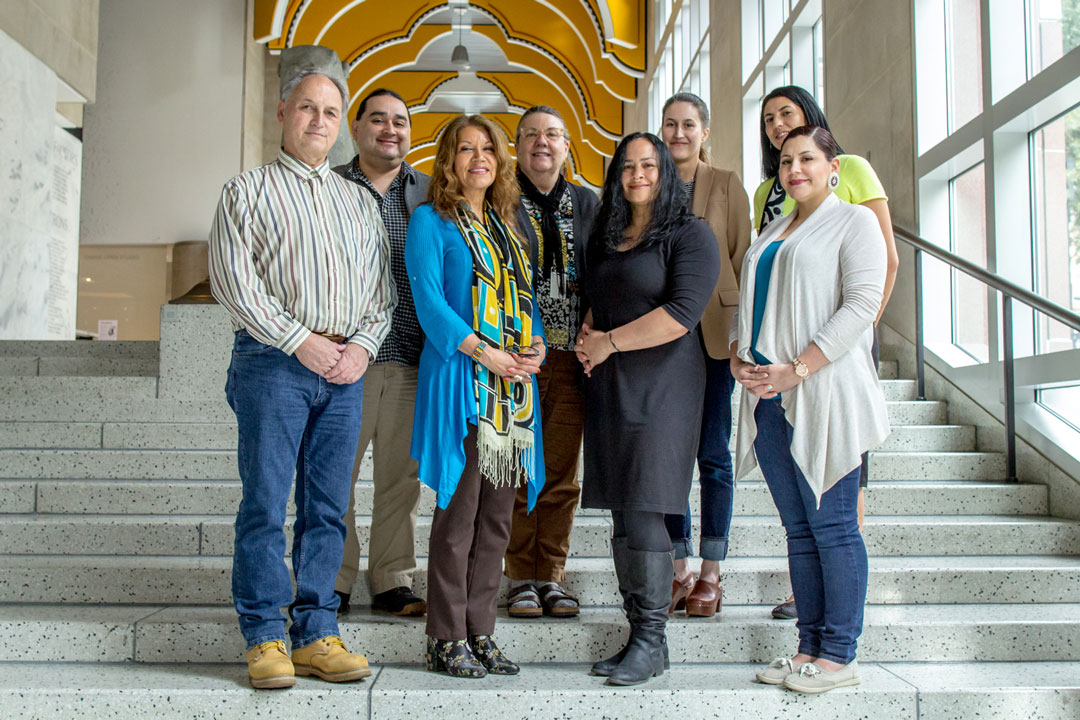An Ethos of Equity: Learn About SAM’s Exhibition Advisory Committees
Over the years, SAM has from time to time brought together a group of community members from diverse backgrounds and affiliations to advise on the presentation of a special exhibition. In 2009, SAM met with leaders of the city’s South Asian community when a set of exquisite royal paintings from Jodhpur would be presented at the Seattle Asian Art Museum. A group of fashion designers and instructors advised the museum—and helped create a fashion show featuring local designers at the museum—for SAM’s fall 2016 exhibition celebrating the work of the legendary Yves Saint Laurent.
These, and numerous other examples, signify the importance to SAM of connecting with people outside of the organization to fulfill its mission of reflecting the community it serves. This ethos guides much of SAM’s work already; for example, the Education & Public Engagement Division nurtures ongoing relationships with local artists, performers, writers, and other culture-makers in presenting dynamic programming and events.
Now it’s official: going forward, the museum will bring this community-centered process to the development of all major special exhibitions presented throughout the year, convening Advisory Committees who will meet and advise the museum throughout the planning process.
A major impetus for making this process official? The deeply rewarding experience working with an advisory committee for Double Exposure: Edward S. Curtis, Marianne Nicolson, Tracy Rector, Will Wilson (June 14–September 9, 2018). As plans for this major exhibition came together, it was clear that the complex subject matter would require thoughtful execution at every step.
The exhibition would be held for the sesquicentennial of the birth of photographer Edward S. Curtis (1868–1952), but far from a celebration, SAM would present a richly nuanced re-evaluation of his legacy. “While Curtis made many contributions to the fields of art and ethnography, his romanticized picture of Native identity has cast a lingering shadow over the perception of Native peoples,” noted Barbara Brotherton, SAM’s Curator of Native American Art. “Today, Indigenous artists are creating aesthetic archives reclaiming agency over their visual representation.” Brotherton worked with three contemporary Indigenous artists—Marianne Nicolson, Tracy Rector, and Will Wilson—to conceive of Double Exposure, an exhibition that would thread their works in conversation with Curtis’ iconic photographs, as well as objects from SAM’s collection.
This collaboration between curator and contemporary artists also included the advisory committee, whose feedback helped make space at the museum for a reckoning with Curtis’s legacy. With Double Exposure, SAM took a big step in its efforts to decolonize the museum. We’d like to acknowledge the committee members once again: Dr. Charlotte Coté (Tseshaht / Nuu-chah-nulth First Nation), Jarrod Da (San Ildefonso Pueblo), Colleen Echohawk-Hayashi (Pawnee Nation / Upper Ahtna Athabascan), Andy Everson (K’ómoks First Nation), Jason Gobin (Tulalip Tribe), Darrell Hillaire (Lummi Nation), Madrienne Salgado (Muckleshoot Tribe), Lydia Sigo (Suquamish Tribe), Asia Tail (Cherokee Nation), and Ken Workman (Duwamish Tribe).
To bring together the advisory committees, invitations are sent to leaders, artists, and thinkers whose own work and communities are reflected in the particular themes of an exhibition. These selections are drawn from SAM’s already-rich network of partnerships and more importantly provide opportunities to create new connections with community leaders and organizations in the region. Reflecting the value of this work, and ensuring that the opportunity to serve is accessible to everyone, SAM offers a stipend to all committee members. Each committee meets with a cross-divisional group of SAM staff who are charged with taking the feedback and guidance of the members back to their colleagues. Interacting with each step of the exhibition-making process over the course of multiple meetings—including curatorial, marketing, education, and more—the committee’s input contributes to the development of exhibition content, communication, and interpretation.
Advisory Committees for upcoming exhibitions are already at work. SAM is grateful for their dedication—and eager to experience how this community-centered model contributes to SAM’s mission to connect art to life.
– Rachel Eggers, SAM Equity Team Outreach Taskforce Chair
Photo: Natali Wiseman. Pictured, L to R: Ken Workman (Duwamish Tribe), Jarrod Da (San Ildefonso Pueblo), Dr. Charlotte Coté (Tseshaht / Nuu-chah-nulth First Nation), Curator of Native American Art Barbara Brotherton, Double Exposure artist Tracy Rector, Asia Tail (Cherokee Nation), Lydia Sigo (Suquamish Tribe), Madrienne Salgado (Muckleshoot Tribe). Not pictured: Colleen Echohawk-Hayashi (Pawnee Nation / Upper Ahtna Athabascan), Andy Everson (K’ómoks First Nation), Jason Gobin (Tulalip Tribe), Darrell Hillaire (Lummi Nation).
